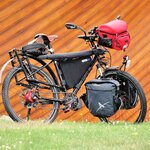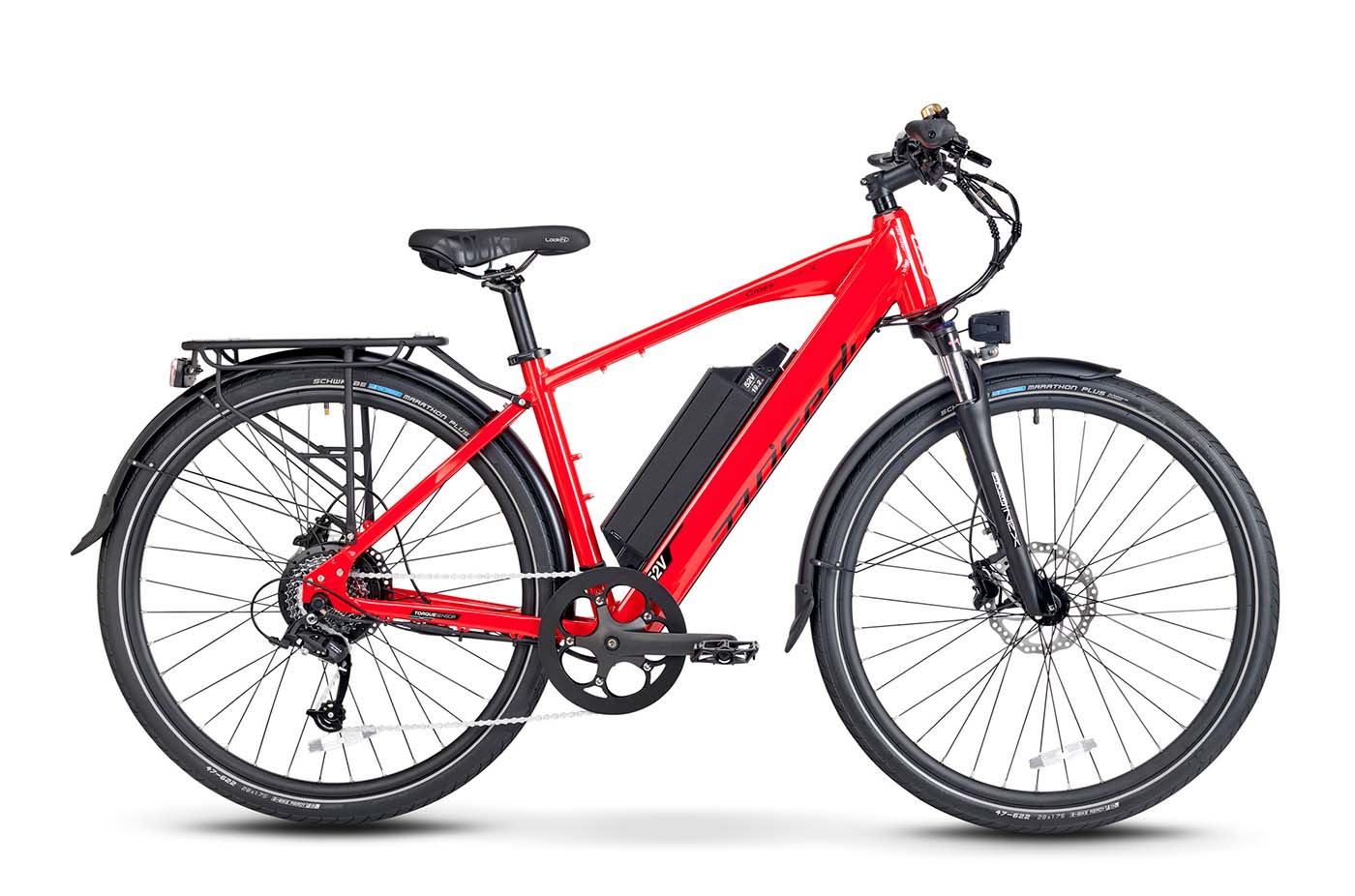MichiganMachinist
New Member
Hello! Im new to e bikes and have a pretty specific and seemingly uncommon need from an e bike.
The short- im looking for a bike that will be able to travel 40 miles round trip reliably on suburban roads, a second battery is OK, charging along the way is not possible. If its built, it will be built on a 2017 raleigh tokul 2 hard tale mountain bike.
More detail- im looking for a bike that i can make my commute to work on occasionally. The suburbs of metro Detroit are pretty spread out, a 40 mile round trip has actually been my shortest ever commute.
This isn't a task i plan on taking on every. Its something i plan on doing only in fair weather on days i have some extra free time. Maybe twice a week or so.
In 24 years old, 6'0", and 180 pounds. That may sound like im reasonably fit, but im not. My life is as sedentary as you can get while still leaving the house. The most exercise i get is walking up the stairs in my house when i get home from work. That being said, i dont have any disabilities or medical issues that would hold me back from riding a bike.
Budget varies. Ive seen $1k bikes that seemed overpriced and then ive seen $3k bikes that looked like a great deal. It all depends on what im getting for the money. Ill pay a little more for a lot more quality but i wont pay a lot more for a little more quality.
Building is an option if there is a decent kit that would fit the 2017 raleigh tokul 2 i have. I rather build to save money and its a decent bike thats really only seen 1 summer of reasonably hard riding when i first got it. It has hydraulic breaks, which i know can be an issue with some kits.
Im reasonably decent with electronics. Swapping out connectors and installing switches shouldn't be an issue, but building battery packs and some of the other crazy stuff you guys do would be pretty far beyond what i would feel comfortable doing.
My average speed would be... Whatever the bike can go. The average road around here is 45mph and bike lanes are nearly non-existent (though relatively empty sidewalks are prevalent). and state law follows standard class 2 and 3 restrictions, 28 mpg pedal assist 20mph throttle 750kw motor max. E bikes are allowed anywhere normal bikes are except hardpack natural dirt trails. I could keep it at 20 for battery conservation sake.
Ive been looking at the rad bikes and luna bikes lately. Luna catches my eye because not only do they offer high capacity 52v 21Aah batteries (USA made with Samsung cells), a spare is "only" about $800 vs other companies where comparable batteries are well over a grand. The reason i also like rad is due to their prevalence and reputation. Tons of people have them so theres tons of support and they seem to be reasonably reliable.
I have no idea where to start with kits. Its hard to know what would fit my particular bike for sure.
All suggestions are welcome, thank you!
The short- im looking for a bike that will be able to travel 40 miles round trip reliably on suburban roads, a second battery is OK, charging along the way is not possible. If its built, it will be built on a 2017 raleigh tokul 2 hard tale mountain bike.
More detail- im looking for a bike that i can make my commute to work on occasionally. The suburbs of metro Detroit are pretty spread out, a 40 mile round trip has actually been my shortest ever commute.
This isn't a task i plan on taking on every. Its something i plan on doing only in fair weather on days i have some extra free time. Maybe twice a week or so.
In 24 years old, 6'0", and 180 pounds. That may sound like im reasonably fit, but im not. My life is as sedentary as you can get while still leaving the house. The most exercise i get is walking up the stairs in my house when i get home from work. That being said, i dont have any disabilities or medical issues that would hold me back from riding a bike.
Budget varies. Ive seen $1k bikes that seemed overpriced and then ive seen $3k bikes that looked like a great deal. It all depends on what im getting for the money. Ill pay a little more for a lot more quality but i wont pay a lot more for a little more quality.
Building is an option if there is a decent kit that would fit the 2017 raleigh tokul 2 i have. I rather build to save money and its a decent bike thats really only seen 1 summer of reasonably hard riding when i first got it. It has hydraulic breaks, which i know can be an issue with some kits.
Im reasonably decent with electronics. Swapping out connectors and installing switches shouldn't be an issue, but building battery packs and some of the other crazy stuff you guys do would be pretty far beyond what i would feel comfortable doing.
My average speed would be... Whatever the bike can go. The average road around here is 45mph and bike lanes are nearly non-existent (though relatively empty sidewalks are prevalent). and state law follows standard class 2 and 3 restrictions, 28 mpg pedal assist 20mph throttle 750kw motor max. E bikes are allowed anywhere normal bikes are except hardpack natural dirt trails. I could keep it at 20 for battery conservation sake.
Ive been looking at the rad bikes and luna bikes lately. Luna catches my eye because not only do they offer high capacity 52v 21Aah batteries (USA made with Samsung cells), a spare is "only" about $800 vs other companies where comparable batteries are well over a grand. The reason i also like rad is due to their prevalence and reputation. Tons of people have them so theres tons of support and they seem to be reasonably reliable.
I have no idea where to start with kits. Its hard to know what would fit my particular bike for sure.
All suggestions are welcome, thank you!








